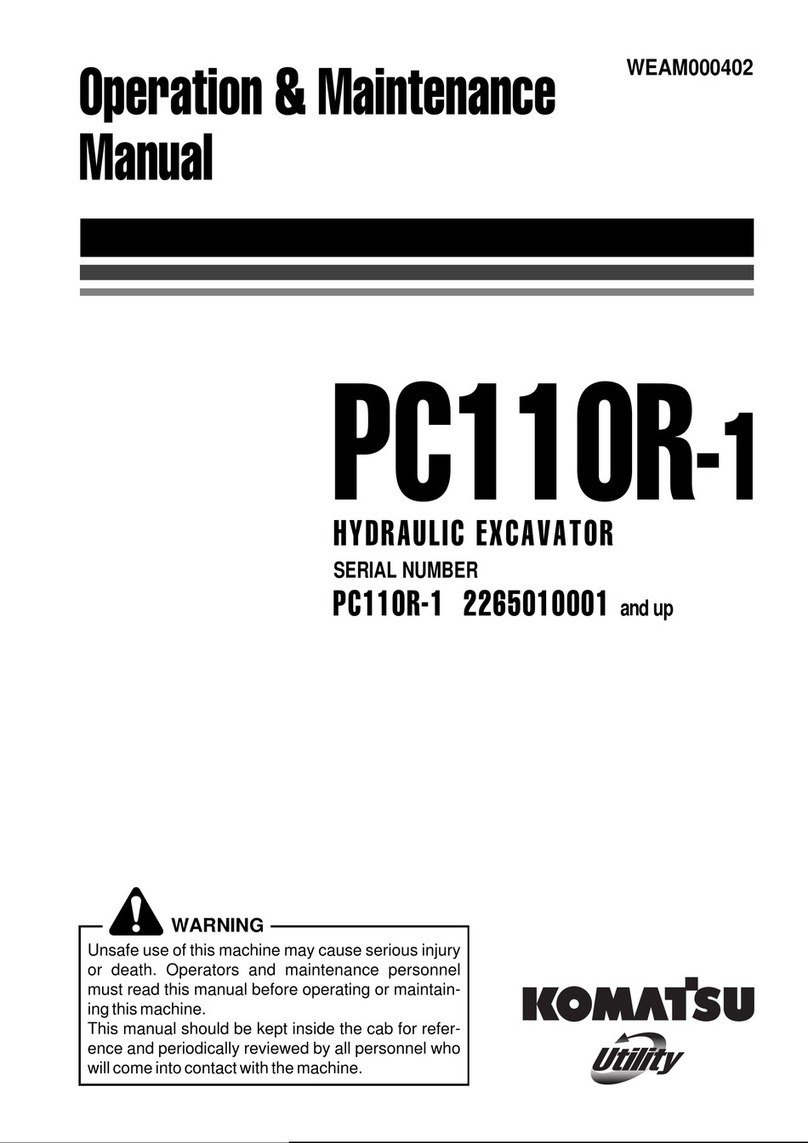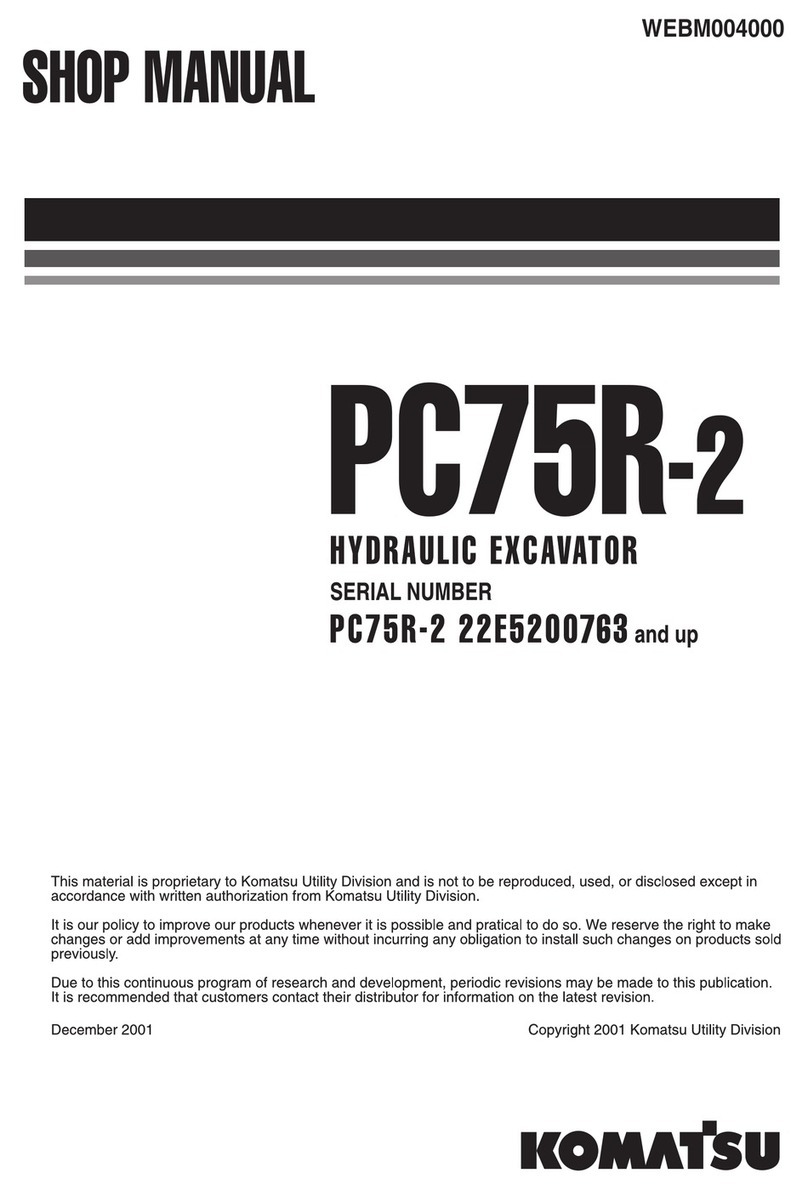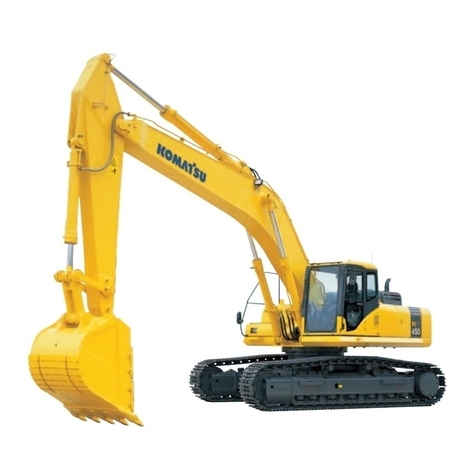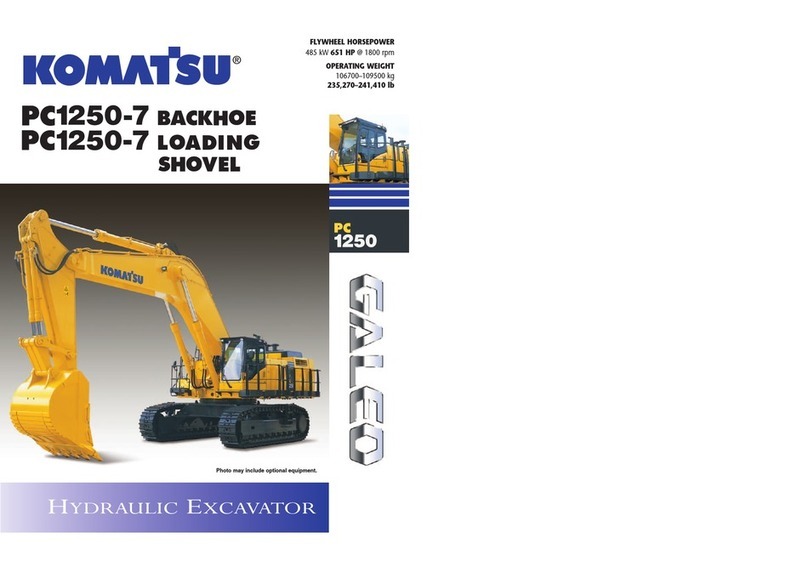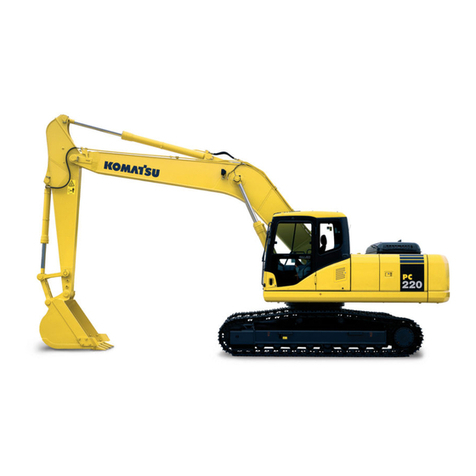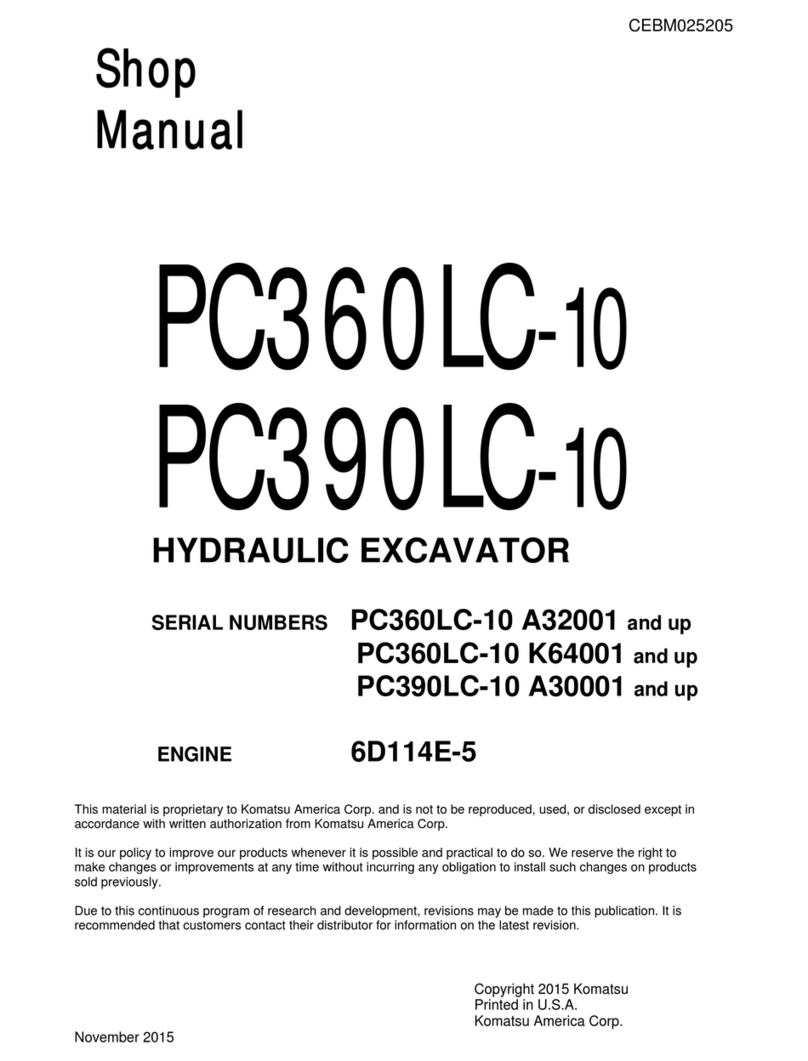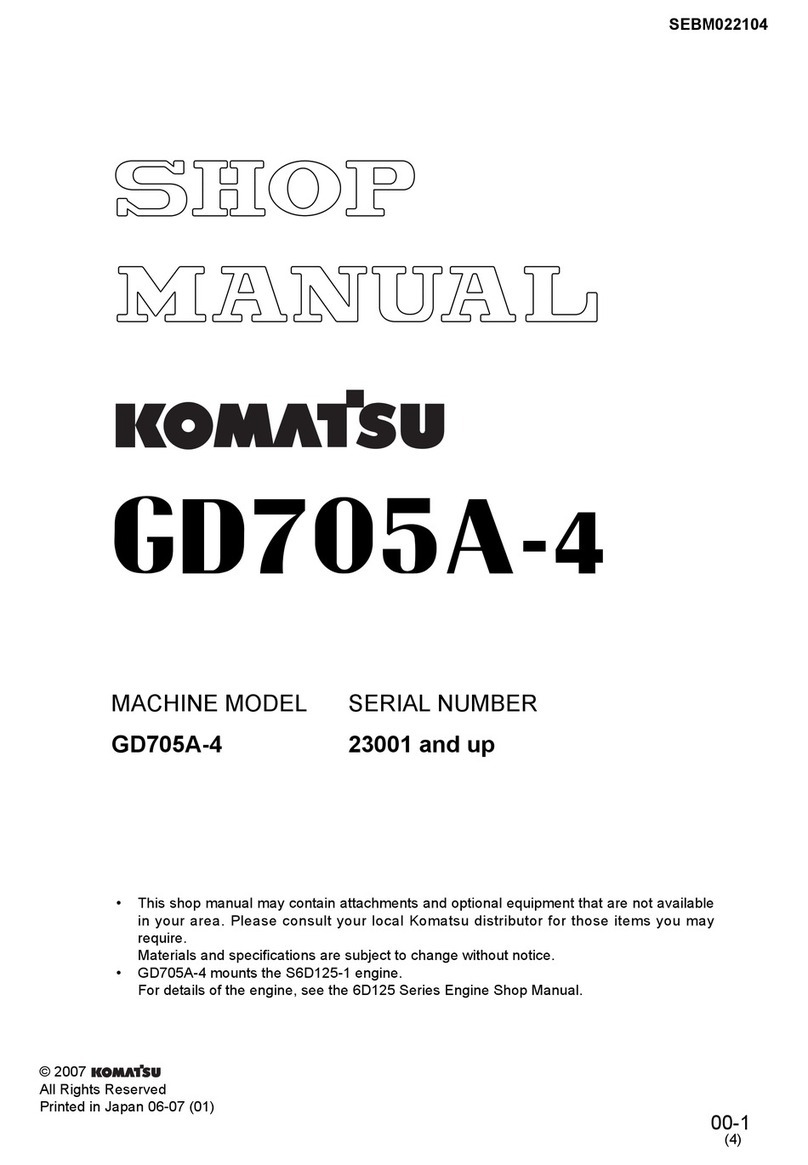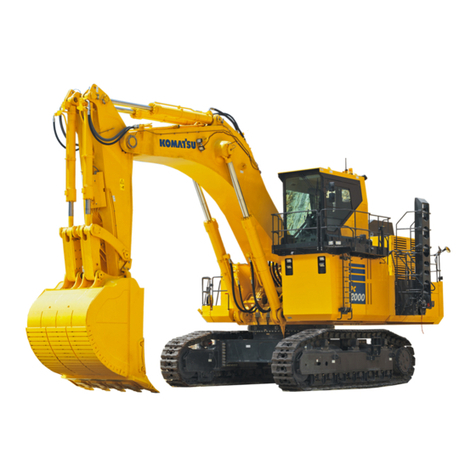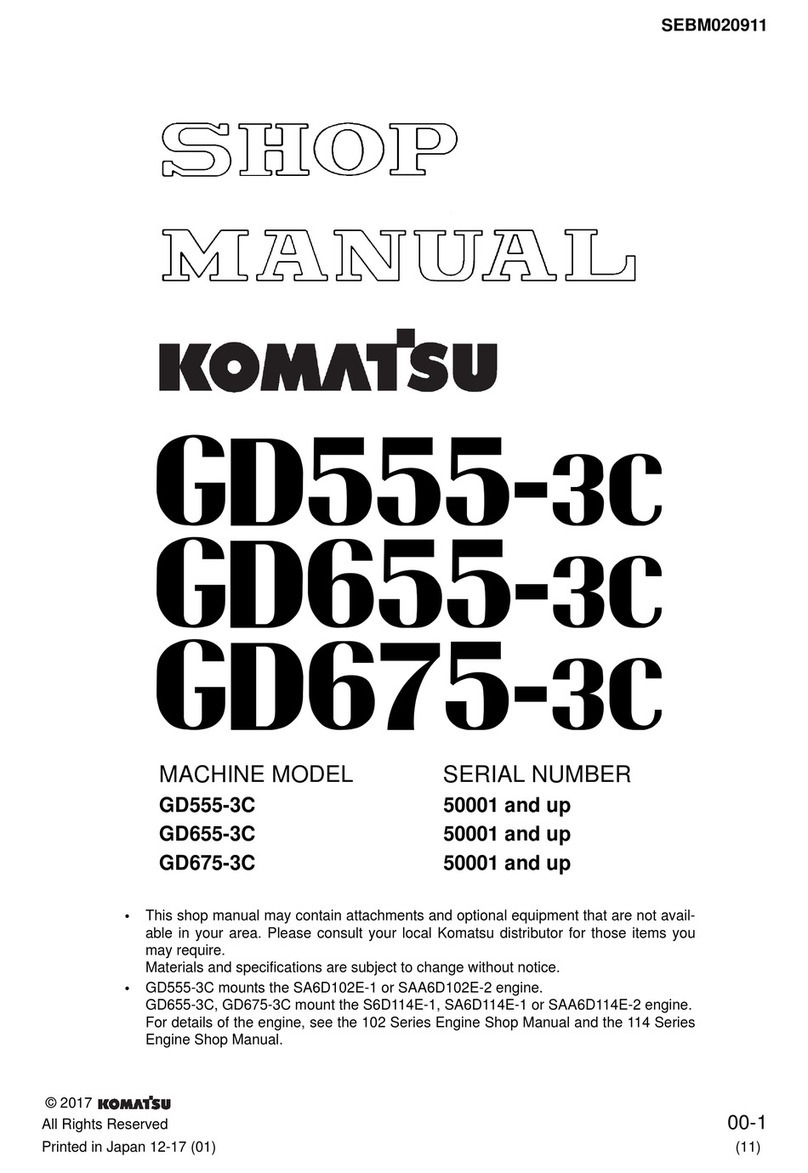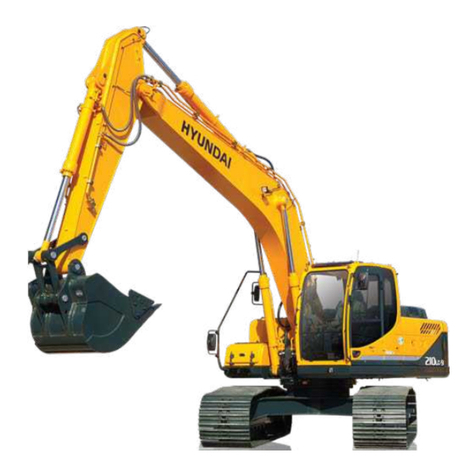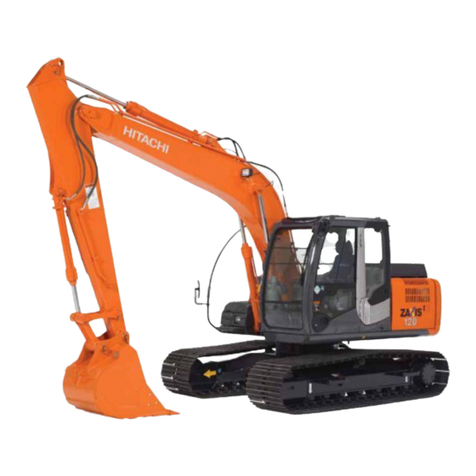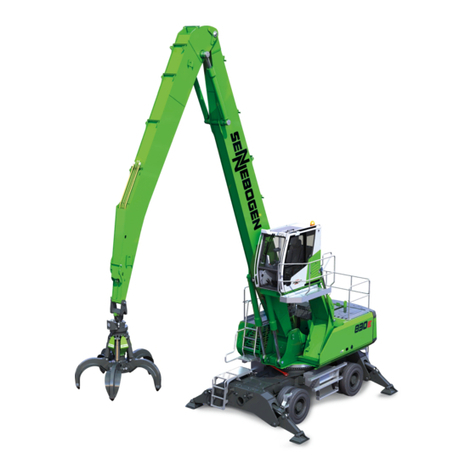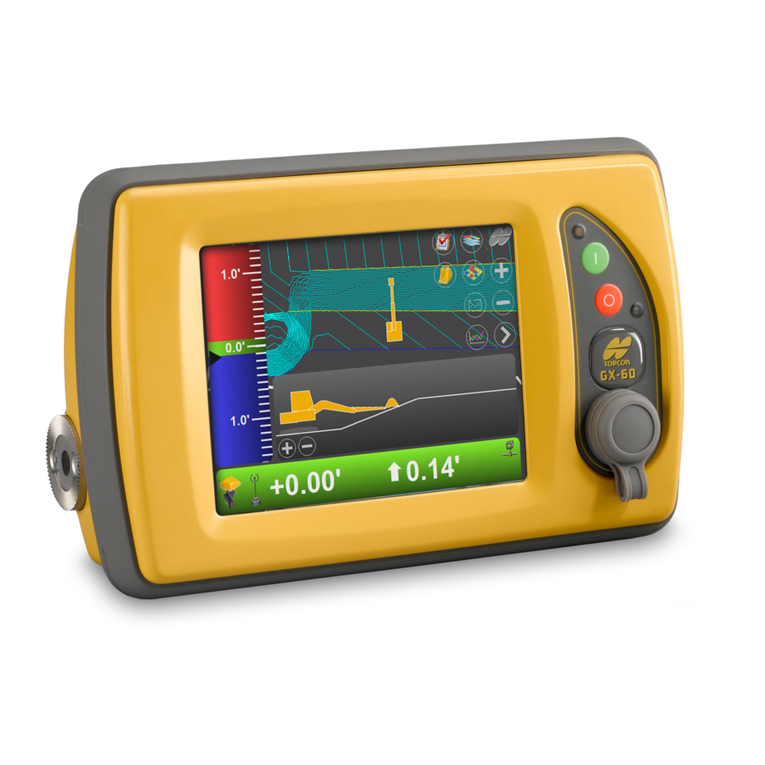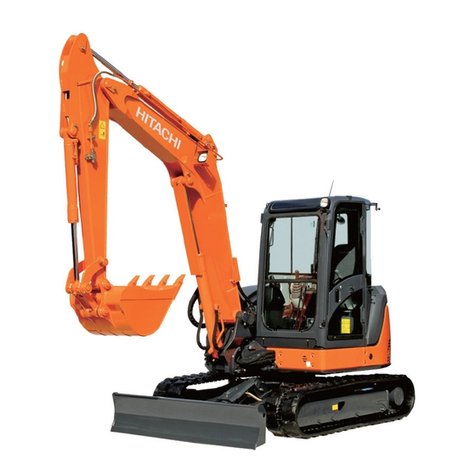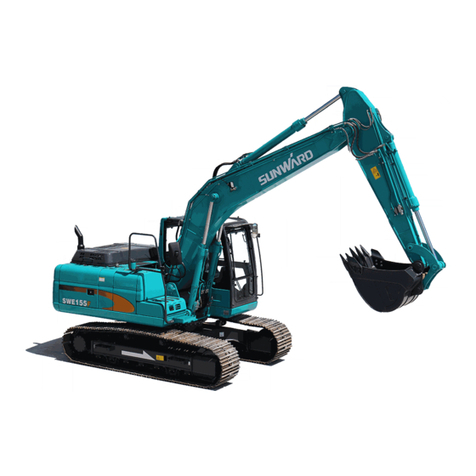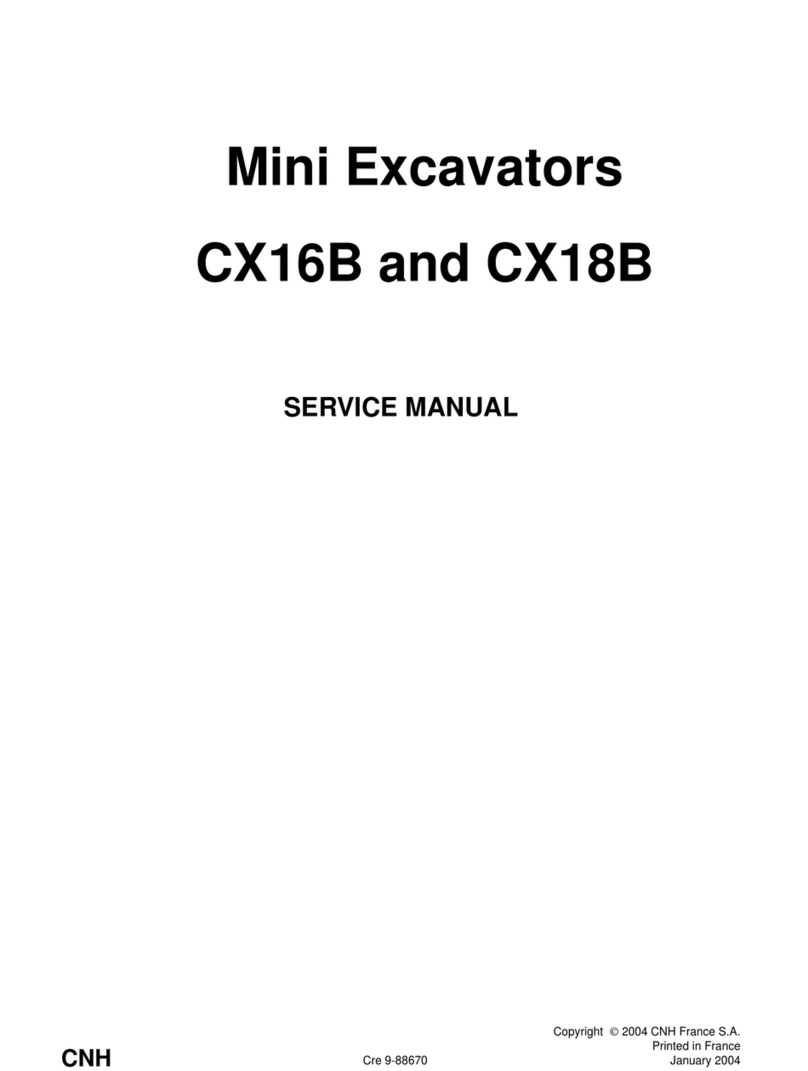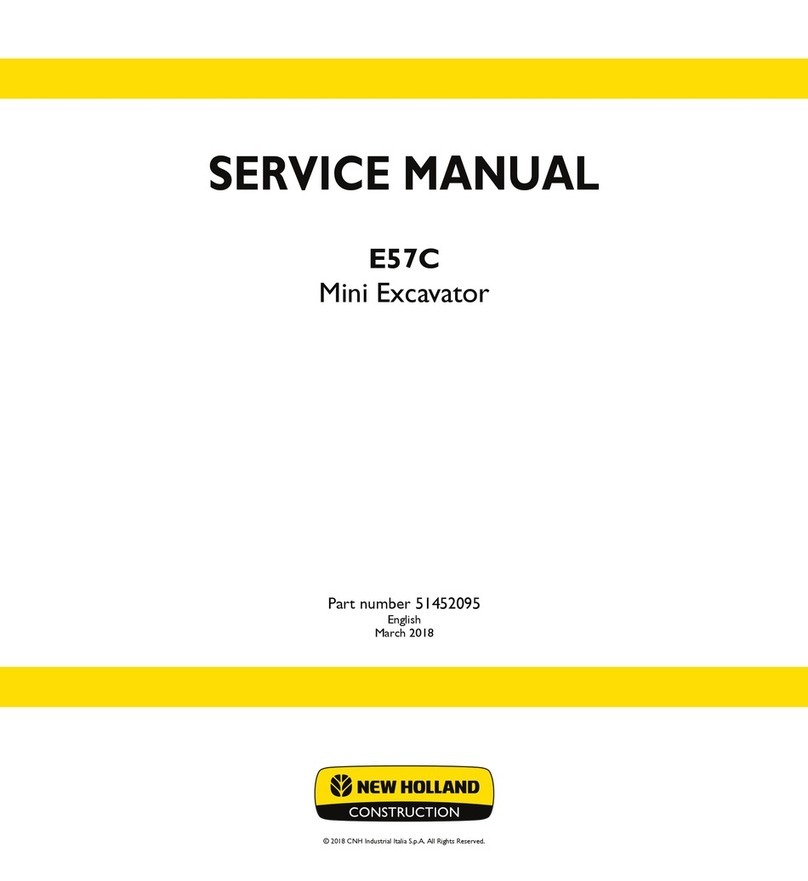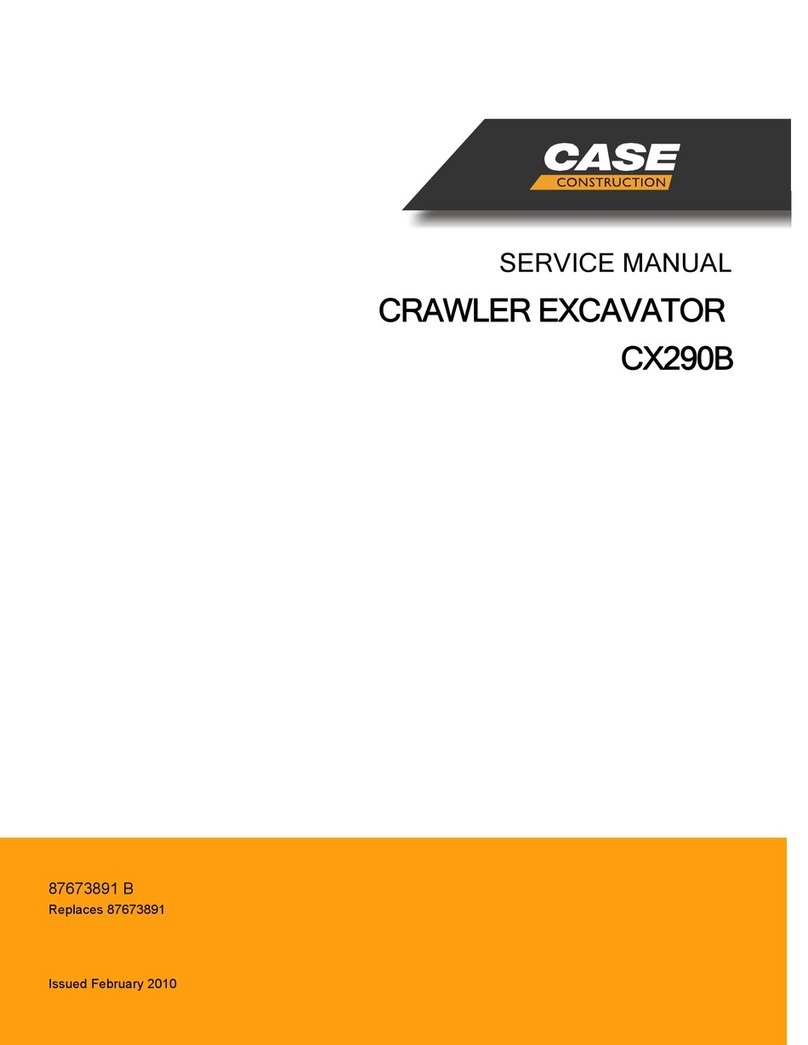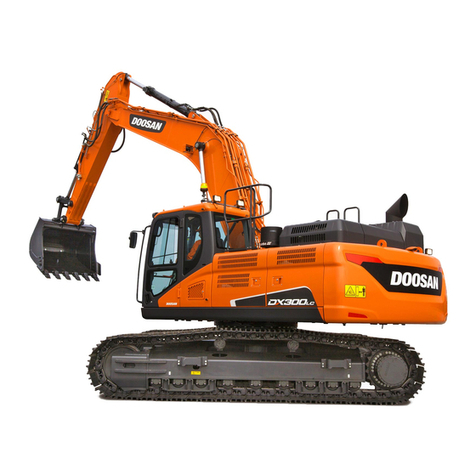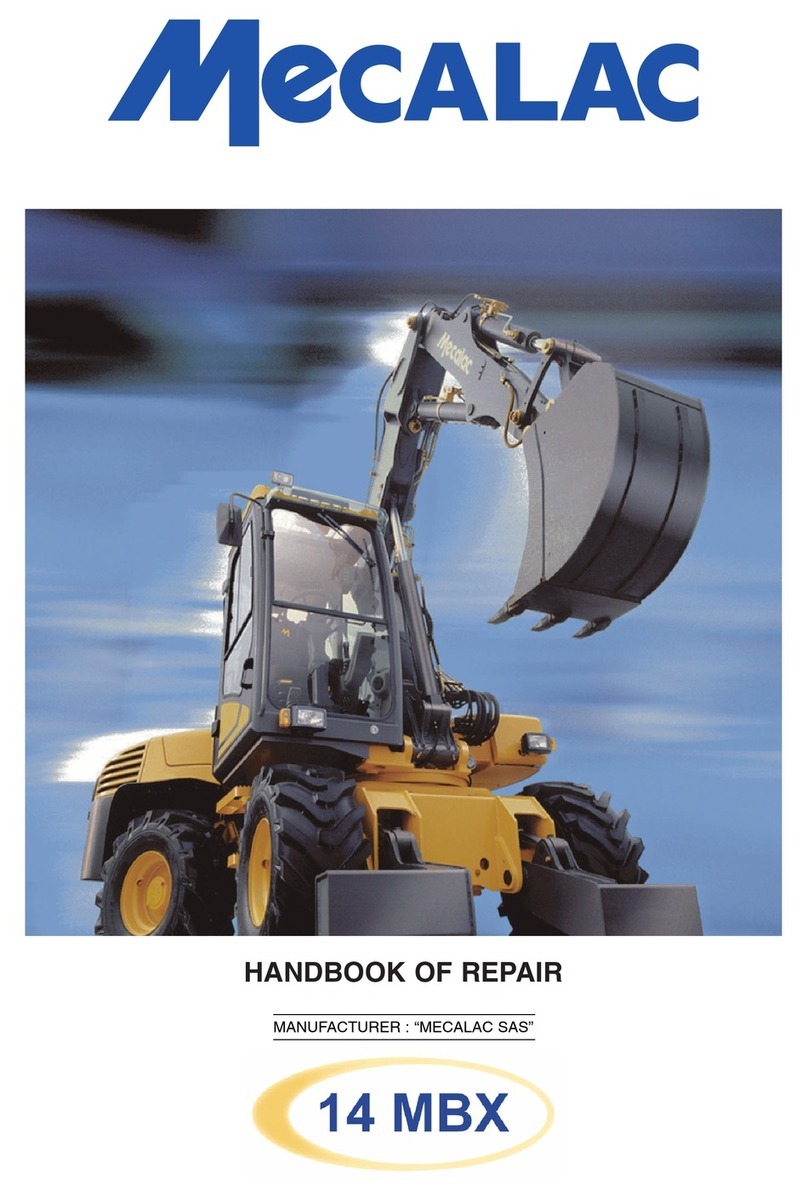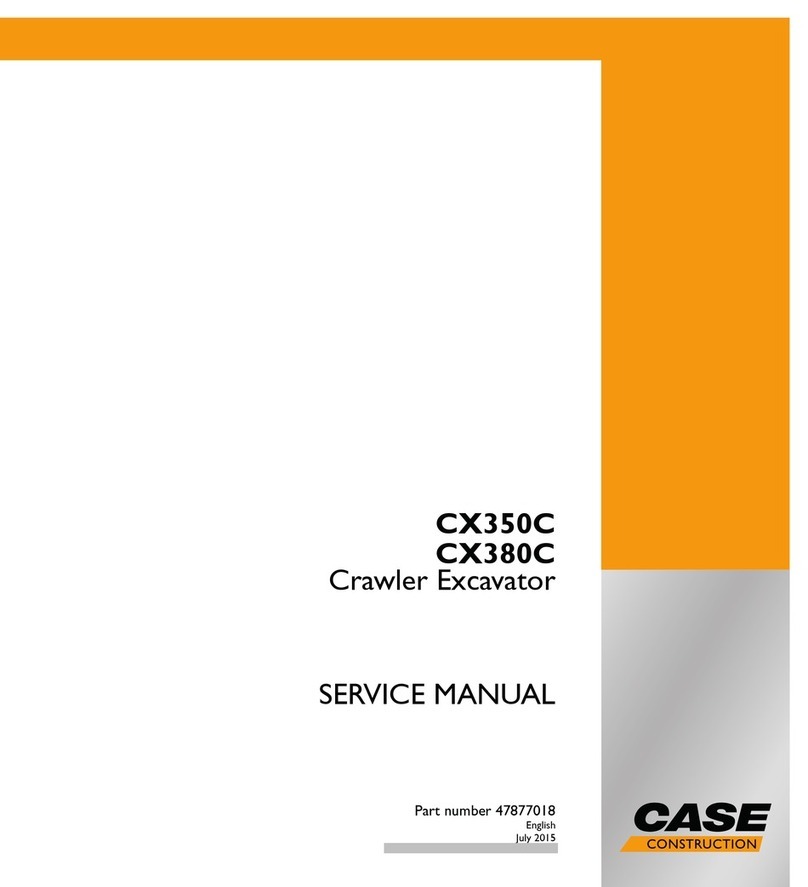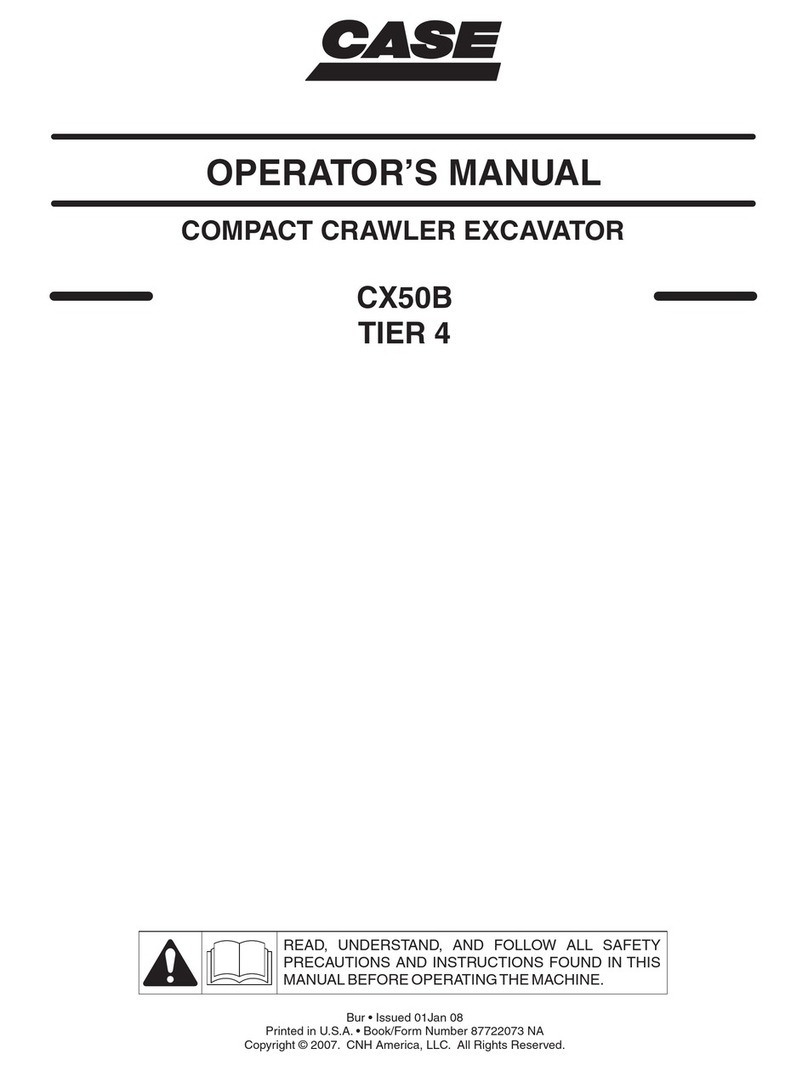
00-6 PC128US-8
00 Index and foreword
Table of contents
Failure code [DY2CKA] Washer drive discon................................................................................. 40-190
Failure code [DY2CKB] Washer drive short................................................................................... 40-192
Failure code [DY2DKB] Wiper drive (for) short............................................................................... 40-194
Failure code [DY2EKB] Wiper drive (rev) short.............................................................................. 40-196
Troubleshooting of electrical system (E-mode).................................................................................. 40-198
Before carrying out troubleshooting of electrical system................................................................ 40-198
Information in troubleshooting table ............................................................................................... 40-200
E-1 When starting switch turned ON, machine monitor displays nothing....................................... 40-202
E-2 When starting switch turned ON (before starting engine), basic check item lights up............. 40-204
E-3 Engine does not start (Engine does not turn) .......................................................................... 40-205
E-4 Preheater does not operate..................................................................................................... 40-208
E-5 Automatic warm-up system does not operate (in cold season)............................................... 40-210
E-6 All work equipment, swing, and travel mechanism do not move or cannot be locked............. 40-212
E-7 Precaution lights up while engine is running............................................................................ 40-214
E-8 Emergency stop item lights up while engine is running........................................................... 40-217
E-9 Engine coolant temperature gauge does not indicate normally............................................... 40-218
E-10 Hydraulic oil temperature gauge does not indicate normally................................................. 40-219
E-11 Fuel level gauge does not indicate normally.......................................................................... 40-221
E-12 Contents of display by machine monitor are different from applicable machine.................... 40-223
E-13 Machine monitor does not display some items...................................................................... 40-223
E-14 Function switch does not work............................................................................................... 40-223
E-15 Auto-decelerator does not operate normally.......................................................................... 40-224
E-16 Working mode does not change............................................................................................ 40-225
E-17 Travel speed does not change............................................................................................... 40-226
E-18 Alarm buzzer cannot be stopped........................................................................................... 40-227
E-19 Windshield wiper and window washer do not operate........................................................... 40-228
E-20 Swing holding brake does not operate normally.................................................................... 40-232
E-21 Travel alarm does not sound or does not stop sounding....................................................... 40-234
E-22 Air conditioner does not operate normally (including air conditioner abnormality record) ..... 40-235
E-23 While starting switch is in OFF position, service meter is not displayed................................ 40-247
E-24 Machine monitor cannot be set in service mode.................................................................... 40-247
E-25 Monitoring function does not display lever control signal normally........................................ 40-248
E-26 KOMTRAX system does not operate normally...................................................................... 40-264
Troubleshooting of hydraulic and mechanical system (H-mode)....................................................... 40-265
Information contained in troubleshooting table............................................................................... 40-265
System chart for hydraulic and mechanical systems...................................................................... 40-266
H-1 Speed or power of all work equipment, swing, and travel are low........................................... 40-268
H-2 Engine speed sharply drops or engine stalls........................................................................... 40-269
H-3 No work equipment, travel and swing move............................................................................ 40-270
H-4 Abnormal noise is heard from around hydraulic pump............................................................ 40-270
H-5 Fine control mode does not function........................................................................................ 40-271
H-6 Speed or power of boom is low ............................................................................................... 40-272
H-7 Speed or power of arm is low.................................................................................................. 40-273
H-8 Speed or power of bucket is low.............................................................................................. 40-274
H-9 Work equipment does not move in its single operation........................................................... 40-275
H-10 Hydraulic drift of work equipment is large.............................................................................. 40-276
H-11 Time lag of work equipment is large...................................................................................... 40-277
H-12 Work equipment loaded more is slower during compound operation.................................... 40-277
H-13 Boom RAISE speed is low in compound operation of swing + boom RAISE........................ 40-277
H-14 Travel speed lowers largely during compound operation of work equipment/swing + travel. 40-278
H-15 Machine deviates during travel.............................................................................................. 40-279
H-16 Travel speed is low................................................................................................................ 40-280
H-17 Machine cannot be steered easily or steering power is low .................................................. 40-281
H-18 Travel speed does not change or it is kept low or high.......................................................... 40-282
H-19 Track does not move (Only either side)................................................................................. 40-282
H-20 Machine does not swing........................................................................................................ 40-283
Find manuals at https://best-manuals.comFind manuals at https://best-manuals.com
